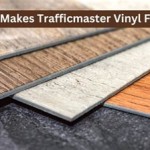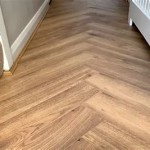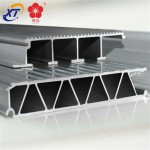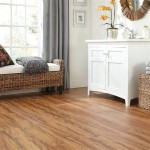Luxury Vinyl Tile Flooring: An Ideal Choice for Kitchens
The kitchen, often considered the heart of the home, demands flooring that balances aesthetics with functionality. Selecting the right flooring material can significantly impact the overall look, feel, and practicality of the space. Among the various options available, luxury vinyl tile (LVT) has emerged as a popular choice, particularly for kitchens. Its durability, water resistance, ease of maintenance, and design versatility make it a compelling alternative to traditional materials like hardwood, ceramic tile, or natural stone. This article will delve into the characteristics of LVT flooring and explore why it is well-suited for the demanding environment of a kitchen.
Luxury vinyl tile is a multi-layered synthetic flooring product designed to mimic the appearance of natural materials. Unlike sheet vinyl, LVT comes in individual tiles or planks, allowing for more customization and the creation of intricate patterns. It typically consists of several layers: a backing layer for stability, a core layer that provides structure and indentation resistance, a printed design layer that replicates the desired aesthetic, and a wear layer that protects the surface from scratches, stains, and wear. The thickness of the wear layer is a crucial factor in determining the durability and longevity of the flooring.
The manufacturing process of LVT involves high-resolution imaging and advanced printing techniques to create realistic visuals. Texturing and embossing further enhance the appearance, replicating the feel of wood grain, stone texture, or other surface finishes. This allows homeowners to achieve the desired look without the cost and maintenance associated with natural materials.
Durability and Water Resistance
One of the primary reasons LVT is a favoured choice for kitchens is its exceptional durability. Kitchens are high-traffic areas prone to spills, dropped items, and frequent cleaning. LVT is engineered to withstand these demands. The wear layer, composed of a clear, protective coating, shields the underlying design from scratches, scuffs, and stains. A thicker wear layer provides greater protection and is recommended for kitchens and other high-traffic areas.
Furthermore, LVT is inherently water-resistant, and in some cases, completely waterproof. This is a significant advantage in a kitchen, where spills are commonplace. Unlike hardwood, which can warp and swell when exposed to moisture, LVT remains stable and unaffected. This resistance to water damage also helps prevent the growth of mold and mildew, contributing to a healthier indoor environment.
The water resistance of LVT extends to its installation. Many LVT products feature a waterproof core, preventing moisture from seeping into the subfloor. This is particularly beneficial in basements or homes with high humidity levels. In comparison to laminate flooring, which can be susceptible to water damage at the seams, LVT typically offers a more robust and reliable water-resistant solution.
The durability of LVT is also reflected in its resistance to indentation. While softer materials like cork or linoleum can dent easily from heavy appliances or furniture, LVT is designed to withstand significant weight and pressure without permanent deformation. This makes it suitable for use under refrigerators, stoves, and other kitchen appliances. However, it is still advisable to use furniture pads under heavy items to further protect the flooring and prevent potential indentations.
Ease of Maintenance and Cleaning
Maintaining a clean and hygienic kitchen is essential, and LVT flooring simplifies this task considerably. Its smooth, non-porous surface resists dirt, stains, and spills, making it easy to clean. Regular sweeping or vacuuming is sufficient to remove loose debris, and a damp mop with a mild detergent can be used to clean up spills and stains. Unlike natural stone or tile, LVT does not require sealing or special cleaning products. This reduces the time and effort required for maintenance, making it a practical choice for busy households.
The stain resistance of LVT is particularly beneficial in kitchens where spills of food and beverages are common. Many LVT products are treated with a stain-resistant coating that prevents spills from penetrating the surface. This makes it easy to wipe up spills before they have a chance to set, preventing permanent stains. The non-porous nature of LVT also inhibits the growth of bacteria and mold, contributing to a healthier and more hygienic kitchen environment.
Unlike hardwood, which requires refinishing every few years to maintain its appearance, LVT typically retains its original appearance for many years with proper care. This eliminates the need for expensive and time-consuming refinishing projects. The wear layer protects the underlying design from fading and wear, ensuring that the flooring maintains its beauty and integrity over time.
In addition to regular cleaning, it is important to protect LVT flooring from excessive wear and tear. Using doormats at entrances can help prevent dirt and debris from being tracked onto the flooring. Avoiding the use of abrasive cleaners or scouring pads can also help prevent scratches and damage to the wear layer. With proper care, LVT flooring can provide years of reliable performance and maintain its aesthetic appeal.
Design Versatility and Aesthetic Appeal
LVT flooring offers a wide range of design options, allowing homeowners to create a kitchen that reflects their personal style. It is available in a variety of colours, patterns, and textures, mimicking the look of natural materials like hardwood, stone, and tile. This versatility allows homeowners to achieve the desired aesthetic without the cost and maintenance associated with natural materials. Whether one prefers the warm, inviting look of wood or the sleek, modern appearance of stone, LVT can provide a realistic and affordable alternative.
The individual tiles or planks of LVT allow for creative installation patterns. They can be laid in traditional straight lines, staggered patterns, or even intricate designs. This allows homeowners to customize the look of their kitchen and create a unique and personalized space. The ability to mix and match different colours and patterns can further enhance the design possibilities.
The realistic textures and embossing of LVT further enhance its aesthetic appeal. The surface of the flooring can be textured to replicate the feel of wood grain, stone texture, or other surface finishes. This adds depth and dimension to the flooring, creating a more authentic and visually appealing look. High-resolution printing techniques ensure that the colours and patterns are vibrant and realistic.
Another advantage of LVT is its ability to complement a wide range of kitchen styles. It can be used in traditional, modern, contemporary, or rustic kitchens. The versatility of LVT allows it to blend seamlessly with different cabinet styles, countertops, and backsplash materials. This makes it a popular choice for both new construction and remodeling projects.
The affordability of LVT also makes it an attractive option for homeowners who are on a budget. While natural materials like hardwood and stone can be expensive, LVT provides a cost-effective alternative that delivers a similar aesthetic. This allows homeowners to achieve the desired look without exceeding their budget. The long lifespan and low maintenance requirements of LVT further contribute to its overall value.
Choosing the right LVT for a kitchen involves considering the desired aesthetic, the level of foot traffic, and the potential for spills and moisture exposure. Selecting a product with a thicker wear layer is recommended for high-traffic areas where durability is a priority. Choosing a waterproof or highly water-resistant LVT is essential for kitchens where spills are common. Finally, considering the colour and pattern of the LVT in relation to other kitchen elements can help create a cohesive and visually appealing space.

What Is Lvt Luxury Vinyl Tile Right For A Kitchen And Bath
What Is The Best Flooring For A Kitchen Tarkett

Luxury Vinyl Flooring Composition Guide Msi Surfaces

Luxury Vinyl Tile At Com

Vinyl Stone Flooring Guide Lx Hausys

Hardwood Vs Luxury Vinyl Plank Flooring The Creative Kitchen Co

How To Choose Best Vinyl Flooring For Kitchen Scv Floorsmith

Best Vinyl Flooring For Your Kitchen

Allure Wellton 6 Mil X 7 In W 48 L Lock Waterproof Luxury Vinyl Plank Flooring 23 3 Sqft Case S132010 The Home Depot

Luxury Vinyl Plank Tile Slaughterbeck Floors Campbell Ca
Related Posts








